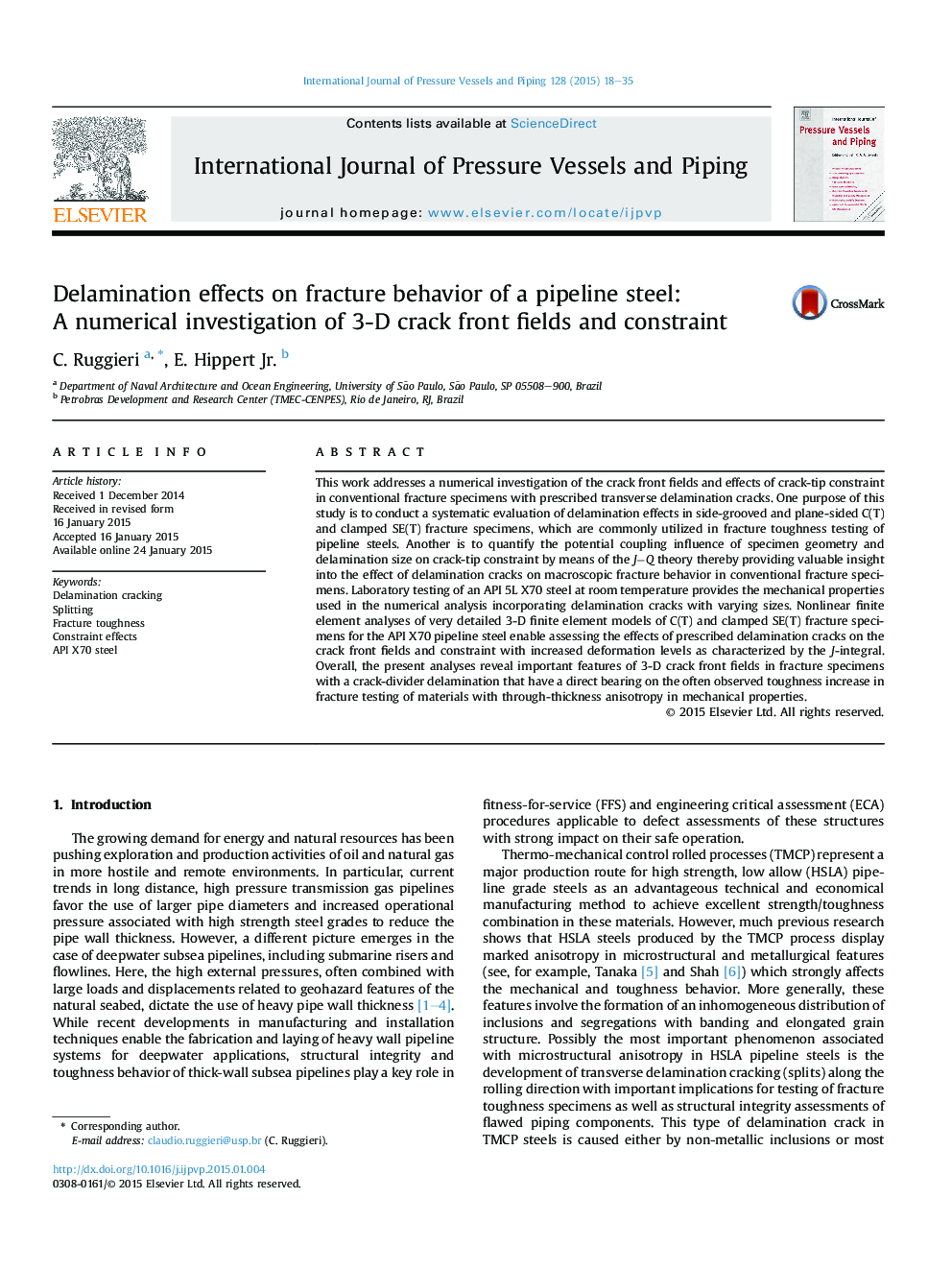| Article ID | Journal | Published Year | Pages | File Type |
|---|---|---|---|---|
| 785308 | International Journal of Pressure Vessels and Piping | 2015 | 18 Pages |
•Extensive 3-D FE analysis of fracture specimens with crack-divider delamination cracks.•Formation of a crack-divider drastically changes the distribution of J over the crack front.•Even a small delamination crack promotes a pronounced stress redistribution.•Side-grooves do not change significantly delamination cracking effects on fracture behavior.•Delamination cracking effects in clamped SE(T) and C(T) geometries are qualitatively similar.
This work addresses a numerical investigation of the crack front fields and effects of crack-tip constraint in conventional fracture specimens with prescribed transverse delamination cracks. One purpose of this study is to conduct a systematic evaluation of delamination effects in side-grooved and plane-sided C(T) and clamped SE(T) fracture specimens, which are commonly utilized in fracture toughness testing of pipeline steels. Another is to quantify the potential coupling influence of specimen geometry and delamination size on crack-tip constraint by means of the J−Q theory thereby providing valuable insight into the effect of delamination cracks on macroscopic fracture behavior in conventional fracture specimens. Laboratory testing of an API 5L X70 steel at room temperature provides the mechanical properties used in the numerical analysis incorporating delamination cracks with varying sizes. Nonlinear finite element analyses of very detailed 3-D finite element models of C(T) and clamped SE(T) fracture specimens for the API X70 pipeline steel enable assessing the effects of prescribed delamination cracks on the crack front fields and constraint with increased deformation levels as characterized by the J-integral. Overall, the present analyses reveal important features of 3-D crack front fields in fracture specimens with a crack-divider delamination that have a direct bearing on the often observed toughness increase in fracture testing of materials with through-thickness anisotropy in mechanical properties.
